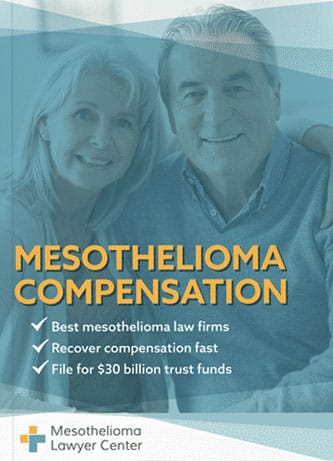Rutland Fire Clay Company made several high-temperature stove products and some construction materials with asbestos until 1978. Rutland asbestos products caused exposure in many workers. This eventually led to asbestos-related claims, bankruptcy, and an asbestos trust fund.
If you or a loved one were diagnosed with mesothelioma, asbestosis, or asbestos-related lung cancer, you might be entitled to substantial compensation. Complete nuestro formulario para recibir nuestro Paquete de Compensación Financiera gratuito. Nuestro paquete contiene información completa sobre abogados con experiencia en mesotelioma en su zona, cómo presentar una reclamación para fondos fiduciarios de asbesto, cómo recibir su compensación en 90 días y más.


Paquete de compensación financiera GRATUITO
- Información sobre despachos de abogados que recuperarán su INDEMNIZACIÓN MÁS ALTA
- Aprenda cómo cobrar en 90 días
- Solicite su parte de $30 mil millones en fondos fiduciarios

Did Rutland Fire Clay Use Asbestos?
Rutland Fire Clay made products for stoves and furnaces as well as some other types of construction materials. Many of its products needed to withstand high temperatures. Rutland used asbestos in these products for decades for its insulating and strengthening properties.
Rutland Fire Clay Company History
- Rufus Perkins founded the Rutland Fire Clay Company in 1883 in Montpelier, Vermont. Perkins started the business after creating a stove patching and lining material he called fire clay.
- Most of Rutland’s early products were designed to reduce and decrease soot buildup in wood-burning stoves and fireplaces. It later turned to removing creosote buildup.
- Rutland’s stove products included linings, patching compounds and cements, polishes, and cleaners.
- Demand for Rutland’s products increased during World War II. Fuel shortages meant that more people turned to wood-burning stoves.
- With the success of its soot and creosote products, Rutland expanded its product line to include construction materials and home repair items.
- Many of Rutland’s stove and construction products contained asbestos to strengthen them, insulate them, and protect against fire.
- Asbestos use in their products led to exposure. Workers who developed illnesses such as mesothelioma and asbestos lung cancer later filed asbestos-related lawsuits against Rutland. The company filed for bankruptcy and set up an asbestos trust fund.
Which Rutland Products Contained Asbestos?
Asbestos was commonly used as an insulating material throughout the 1900s. It was especially heavily used in products that needed to withstand the high temperatures of stoves and fireplaces. Like other companies that made similar products, Rutland
The following Rutland products have been confirmed to contain up to 10% chrysotile asbestos:
- Rutland Boiler Covering
- Rutland Furnace Cement
- Rutland Ready-Mixed Joint Cement
- Rutland Wallboard Joint Cement
- Rutland Roofing Cement No. 4
- Rutland Roofing Cement No. 7
Who Was at Risk of Exposure to Asbestos in Rutland Products?
Rutland employees who manufactured the company’s asbestos products were first in line to be exposed. They handled asbestos and asbestos materials, which usually leads to asbestos fibers in the air.
Workers handling the materials or even doing another job in the same area were likely to inhale harmful asbestos fibers.
Since most Rutland products were created for home improvement or construction projects, many trabajadores de la construcción were affected by the company’s asbestos-containing products. This included:
- Fireplace and stove installers and repairers
- Masons
- Instaladores de paneles de yeso
- Cement workers
- Demolition workers and laborers
- Deshollinadores
Many Rutland asbestos products went into residential buildings and homes. When intact, these products posed minimal risks. If they were disturbed—by deterioration over time, unexpected damage, or home repairs and renovations—they could release fibers and expose anyone in the home.
Rutland Asbestos Lawsuits
Years of manufacturing and distributing asbestos products led to exposure in workers and homeowners and lawsuits against Rutland, including these:
- Kenneth Cobb developed asbestosis after working as a pipefitter. He handled wallboard, insulation, and other construction materials made with asbestos. Cobb sued Rutland and Owens Corning for his illness and damages. He was awarded almost $700,000.
- Ethel Scheidel filed a lawsuit on behalf of her husband, Victor. He worked as a contractor and was exposed to assets through products made by many different companies. Rutland was one of the companies named in the suit.
Bankruptcy and Trust Fund
By 1999, with more than 50,000 pending asbestos-related cases, Rutland filed for Chapter 11 bankruptcy, citing over $67 million in both current and future asbestos claims as the reason.
As part of the Chapter 11 plan, Rutland agreed to set up an fondo fiduciario para el amianto to compensate for all asbestos-related lawsuits.
When the company emerged from bankruptcy in 2000, it established the Rutland Fire Clay Asbestos Trust Agreement.
Along with Rutland, two other companies (M.H. Detrick y Rock Wool Manufacturing) created a trust fund under the Asbestos Resolution Trust.
A total of $8 million was placed into the fund by Rutland. It last accepted claims in 2011 and is not currently active.
Rutland Today
Now known as Rutland Products, the company sells a line of stove and fireplace maintenance products.
According to the company website, Rutland offers over 700 products, including fire starters, silicone sealants, chimney cleaning supplies, stove door replacement gaskets, and more. Rutland no longer uses asbestos in any of its products.
What to Do if You Were Exposed to Rutland Asbestos Products
If you worked with Rutland products during the period of asbestos use, talk to an bufete de abogados especializado en amianto to find out how you can seek compensation.
The Rutland Trust is not currently active or taking claims, but you may have other opportunities for compensation. An abogado con experiencia en mesotelioma can find additional options and give you the best chance of recovering damages.
Additional Help and Resources for Mesothelioma Victims
Remember, if you’ve been diagnosed with an asbestos illness, you may qualify for significant compensation. Remember to fill out our form for your free Financial Compensation Packet, with information on asbestos and mesothelioma lawyers in your area.

Pablo Danziger
Revisor y editorPaul Danziger creció en Houston, Texas, y se licenció en Derecho en la Facultad de Derecho de la Universidad Northwestern en Chicago. Durante más de 25 años, se ha dedicado a representar a víctimas de mesotelioma y a otras personas afectadas por la exposición al asbesto. Paul y su bufete han representado a miles de personas diagnosticadas con mesotelioma, asbestosis y cáncer de pulmón, obteniendo indemnizaciones significativas para los clientes lesionados. Cada cliente es fundamental para Paul y atenderá todas las llamadas de quienes deseen hablar con él. Paul y su bufete se encargan de casos de mesotelioma en todo Estados Unidos.
Conéctese con el abogado especializado en mesotelioma Paul Danziger
Referencias
- Asbestos Resolution Website. (n.d.). Asbestos Resolution.
Recuperado de: http://resasb.org/ - Rutland. (n.d.). About.
Recuperado de: https://rutland.com/pages/about?v=32aec8db952d - Appellate Division of the Supreme Court of the State of New York, Third Department. (1999, February 11). Scheidel v. A.C. and S., Inc.
Recuperado de: https://www.leagle.com/decision/19991009258ad2d7512347 - Supreme Court of Indiana. (2001, September 10). Owens Corning Fiberglass Corp., v. David Cobb.
Recuperado de: https://caselaw.findlaw.com/in-supreme-court/1472293.html
